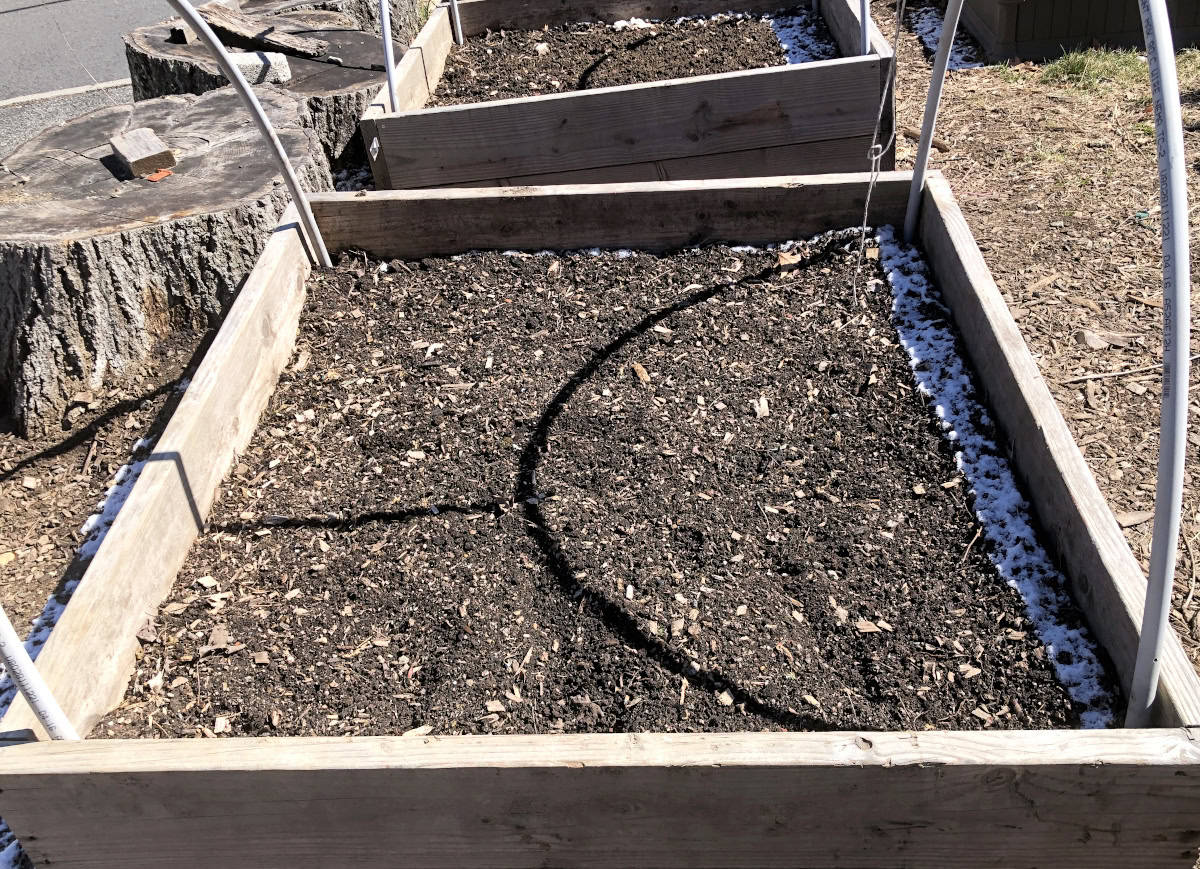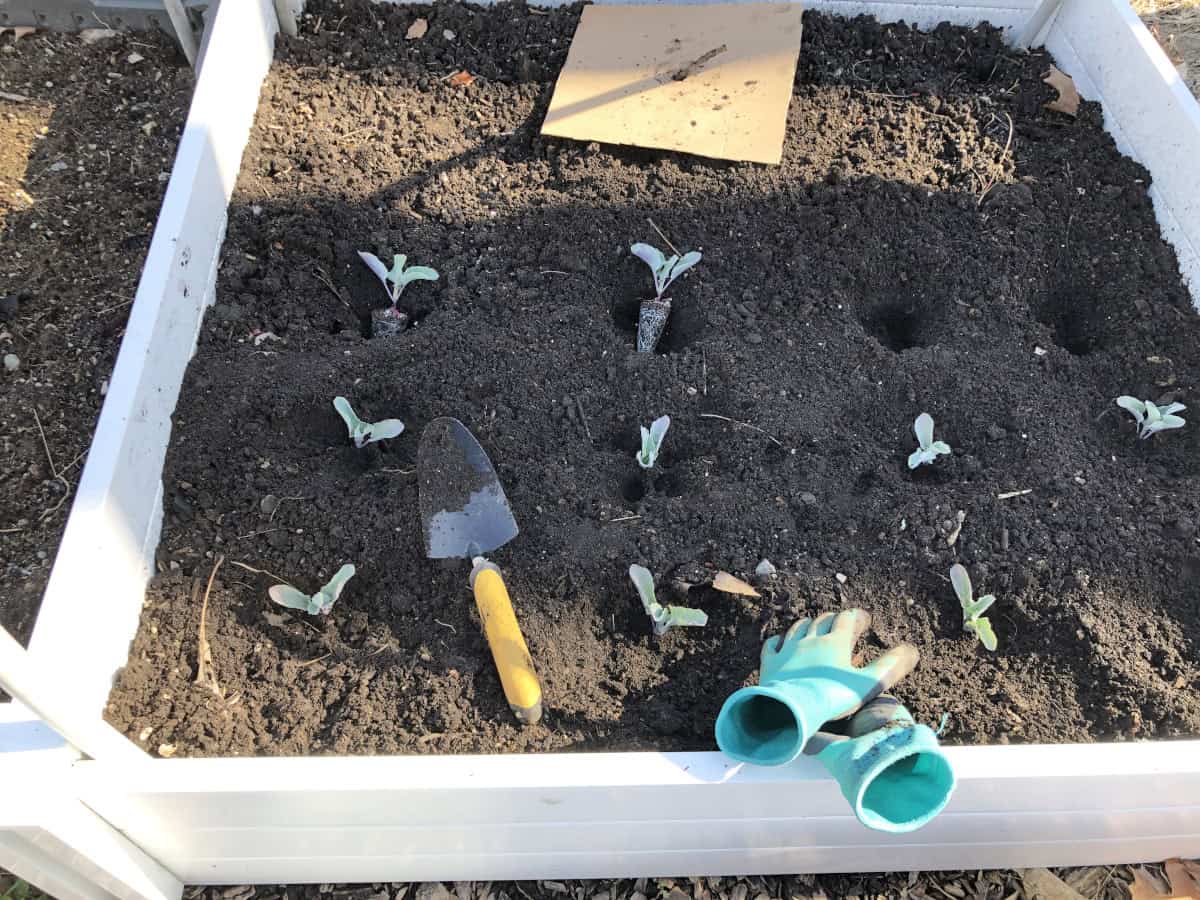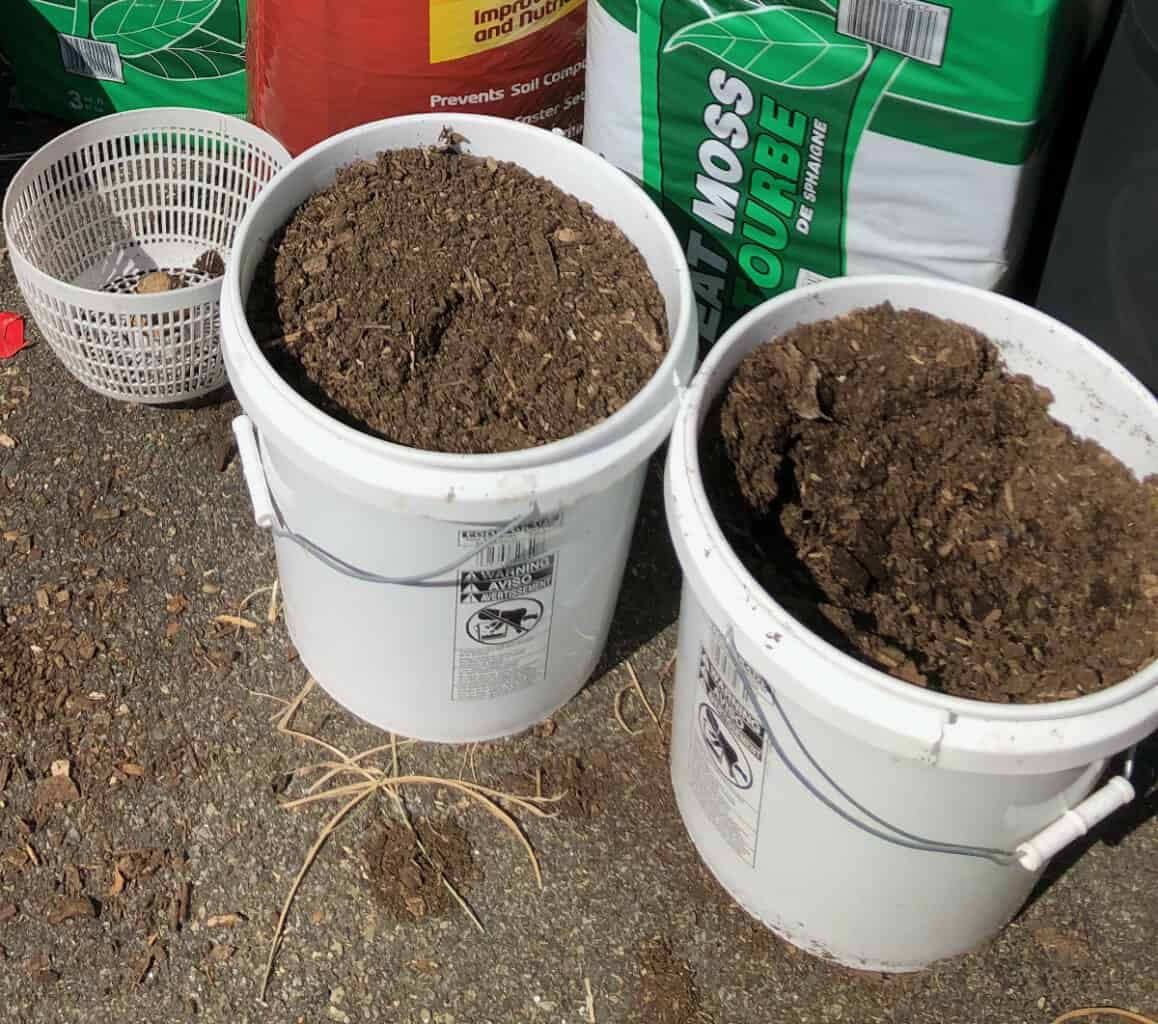Cleaning a garden is a joyful task as it is one of the first things to do when spring comes and gardeners finally get out to do some tasks outside. By cleaning the garden beds, we prepare the soil to welcome new plants, seedlings, seeds, and perennials sprouting again.
- Clear the winter mulch, and remove leaves, dead plants, twigs, weeds, and remove anything on top of the garden beds that do not belong there.
- Remove dead, dried growth from perennial plants
- Prune trees and shrubs
- Edge the garden beds and fix the beds that need maintenance
- Start a compost pile with the removed plants, leaves, twigs

Winter mulch helps protect bare soil, retain moisture in the soil, reduce erosion, and build up nutrients. When removed the soil in spring is healthy, moist, and nutrient-rich to welcome new seedlings or seeds sowed directly in the garden bed. Remove the winter mulch during clearing the garden beds in spring before planting new healthy seedlings or sowing the seeds.
I use a good old fashion rake with a wooden handle to remove mulch, leaves, and everything that needs to be raked out of my garden beds. If you are looking for a good old fashioned wooden handle here is one that might just be what you are looking for! It is a straight rake with an ash wood handle, just a classic.
By removing dead plants, twigs, and weeds, the garden is cleared of plants that are decaying, molding, or spreading through the root system. By cleaning the garden beds off of these, the new plants and tender seedlings will have healthy soil beneath and space to grow strong roots to support the growth of new plants all the way to harvest.
To remove dead plants, I use garden steel pruning shears. No gardener can have a garden without shears, they are just so versatile and very useful around the garden. I use them to prune, remove dead branches, and remove spent vegetables like broccoli stems after harvest. I use them to cut raspberry canes, shrubs, and of course my climbing roses. I also do not spend much on garden pruning shears, because I need multiple and buy them more often than I would like. These ones are around $20 and they do the job!
By removing dead and dried growth on perennials, we make space for new growth to come. Plants will be healthy looking with any diseased or dead parts removed. These parts could cause disease growth and spread to the healthy parts of the plant. Dried parts could easily break and rub against the healthy parts of the plant and damage them causing them to dry out as well.
By pruning, we make space for new growth and remove dead, broken, and diseased parts, which protects the perennials from spreading the disease on the plant. By pruning, we also shape perennials and encourage new growth.
When clearing the garden beds while they are still bare it is easy to spot any needs for maintenance like mending garden beds and resolving erosion problems. Once the beds are full of green foliage it is hard to spot problems with the beds, especially in raised beds, or container gardens.
When should I clean my garden beds in the spring?
Clean garden beds in early spring, or late winter when the snow has melted and it is nearly time to plant the seedlings or seeds in the garden. Amend the clean garden beds before planting as needed.

A GOOD READ: How to improve garden soil, DIY Raised Bed Soil Mix Recipe
Should you remove leaves from the garden in spring?
Remove the leaves from the vegetable garden beds. Leaves can be left in place and not removed from around perennial plants, shrubs, canes, and trees. In the case of perennial plants, the leaves will serve as mulch and decay over time while providing the plants with organic matter.
What can I do with my garden leaves in the spring?
Leaves break down over time and create leaf mould which is a valuable soil conditioner. The best quality leaf moul is made of oak and beech trees. Pile your leaves in a pile and let them naturally decay, or pile them in a large plastic drum and shred them using a weed wacker. Then leave them to decay. When shredded, the leaves turn into mould much faster. Leaves can be added to the compost pile or buried in garden beds using trench composting.

The weed wacker is a handy tool to have especially when shredding leaves quickly and all by myself. I use it to mow around my garden beds as well. When it comes to electric tools, my husband who is a carpenter and uses a vast number of electric tools only wills to buy Makita, the ones with rechargeable batteries. In my garden, I use a Makita weed wacker that is light enough for me to use around the property. I do not like my husband moving around my garden beds because he regularly damages or kills plants, and makes some of my perennials “disappear.” I decided I would move our property myself using an electric weed wacker because it is so light and gets into really tight places around the garden. We also have multiple batteries, so while one is being used, the other one is being changed. Once the battery is spent, I just swap the empty one for the full one and have the empty one changed again. It is a great tool for women or those who do not have much strength to run around with a heavy weed wacker, mover, or have only a small property to care for. It has no gas fumes like the gas one when in use, it is relatively lightweight and always changed if you have more than one battery. Makita batteries are compatible with other Makita tools so they are easy to use for all your tools of the same brand, whether it’s a weed wacker, a leaf blower, or anything else. We use these batteries for all our electric garden tools.
I also do not want to deal with gas, so I specifically use electric tools to make things easier, cleaner, and quicker for me, to get things done, and to move on.
How to start a compost pile
Assign an area where you till pile organic matter from your garden to make your own homemade compost. Simply pile all the organic matter that comes from your garden, such as leaves, small twigs, dead and dried plants, grass clippings, or weeds. Let the pile sit and decay. Over time you will have great homemade compost.
I usually add kitchen scraps, compost, and worm castings to the pile along with spent and old soil to enrich the compost and speed up the composting process. When you have a compost pile nothing goes to waste, even weeds.
What happens if I do not clear my garden in the spring?
If the garden is not cleared in the spring, it will look unhealthy and messy. In addition to the bad look, the dead plants might carry some disease and make your garden unhealthy. Fungus, mold, and disease from dead plants just lying in the garden beds along with healthy plants might spread the disease, fungus, and mold to healthy plants and cause problems through the growing season. In addition, the material left lying on the ground can hide weeds and pests that can overtake healthy plants and soil.
What seedlings to plant outdoors in April in zone 6
What vegetables are best direct sow?

